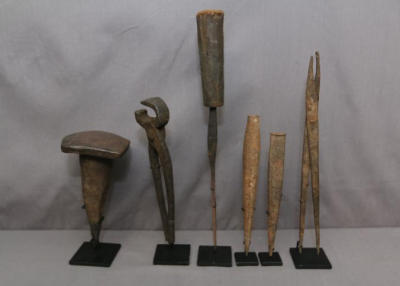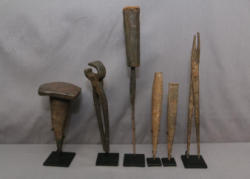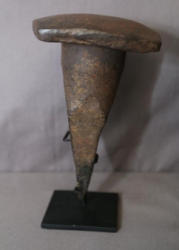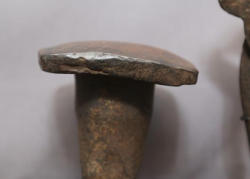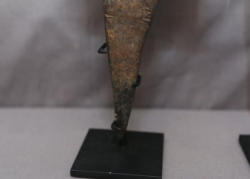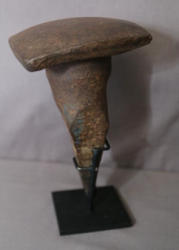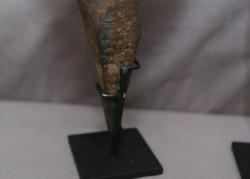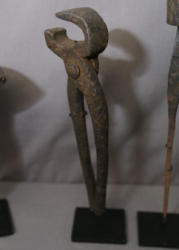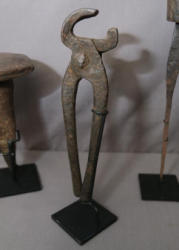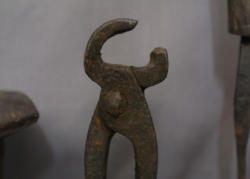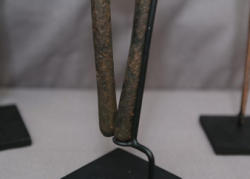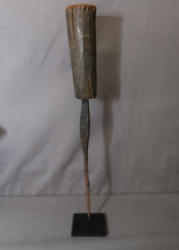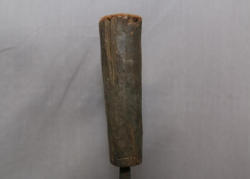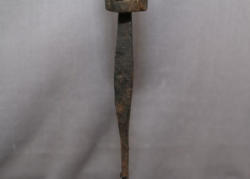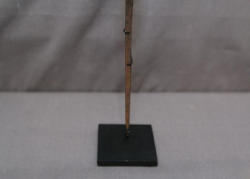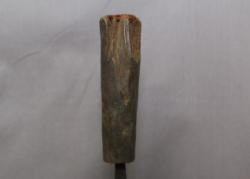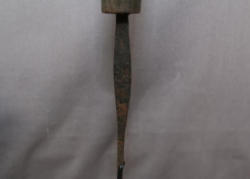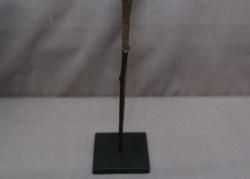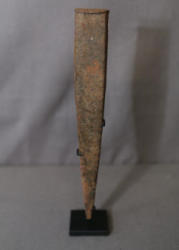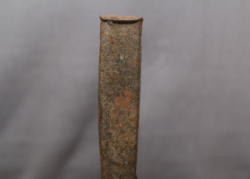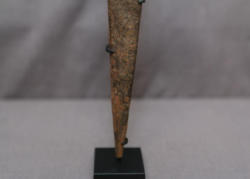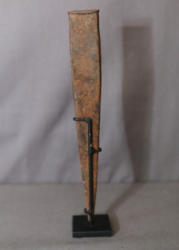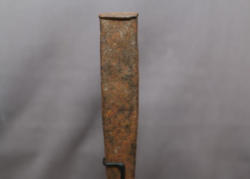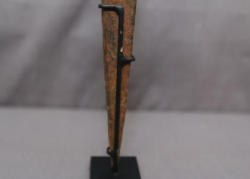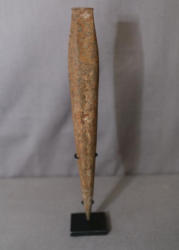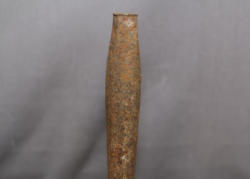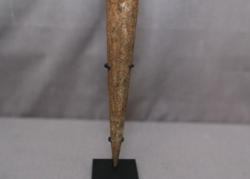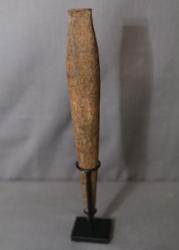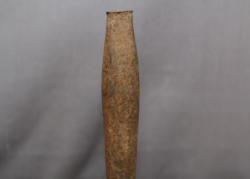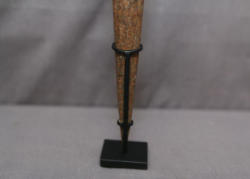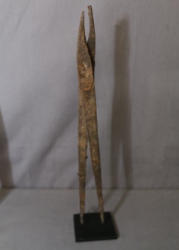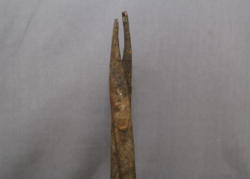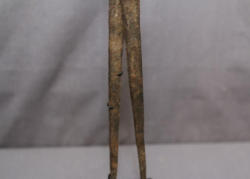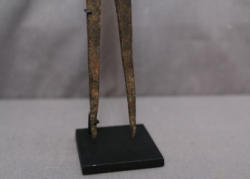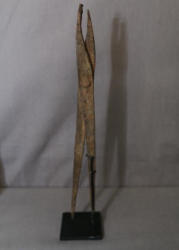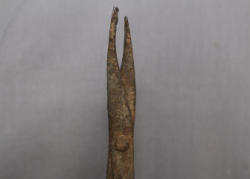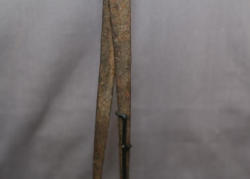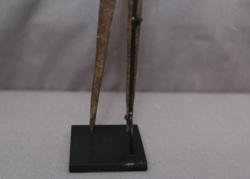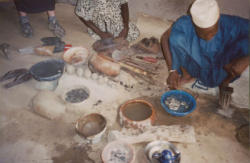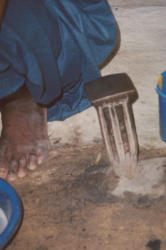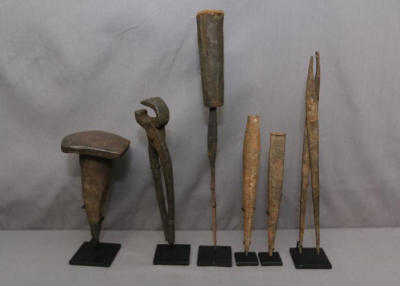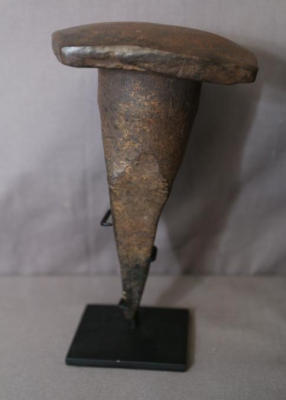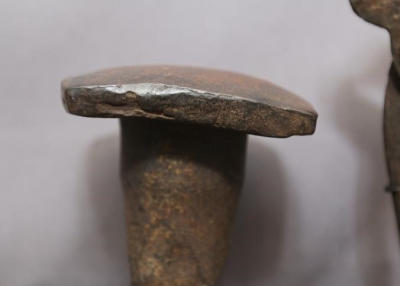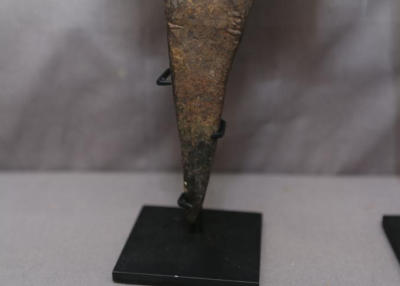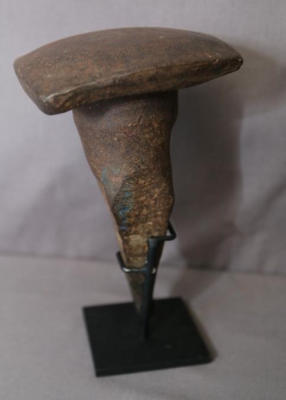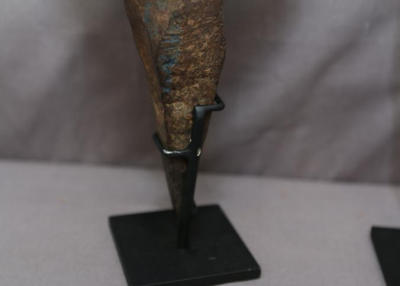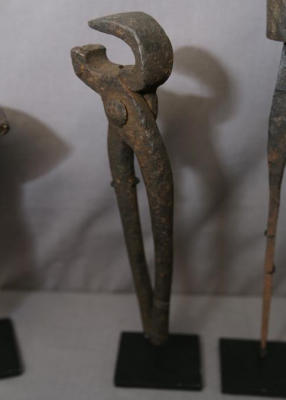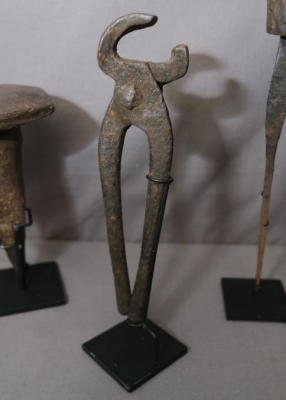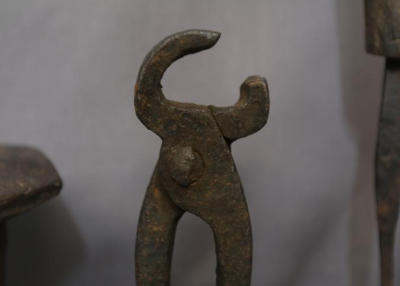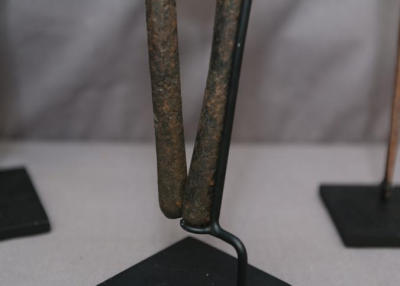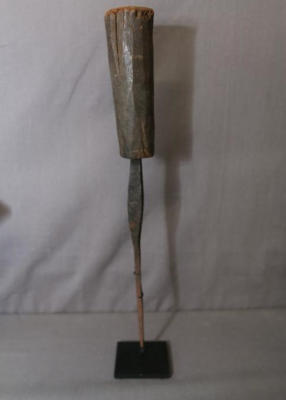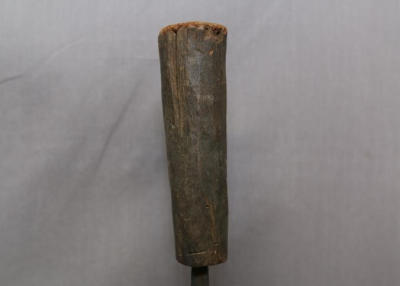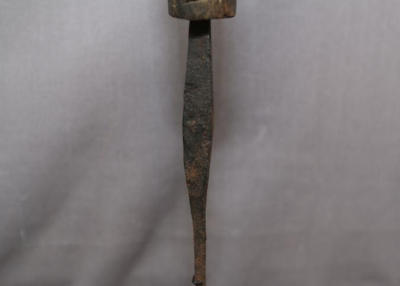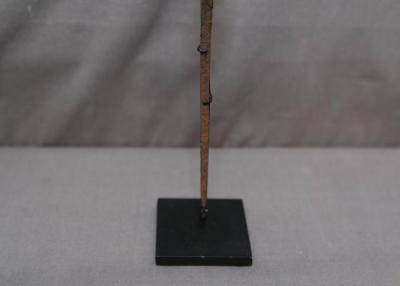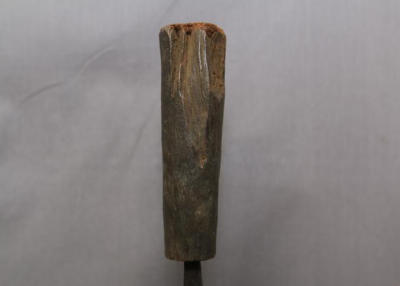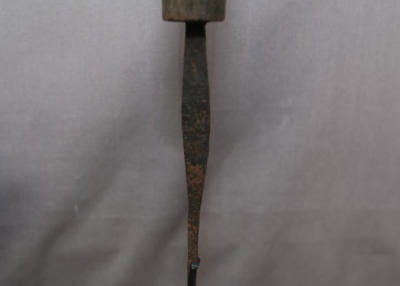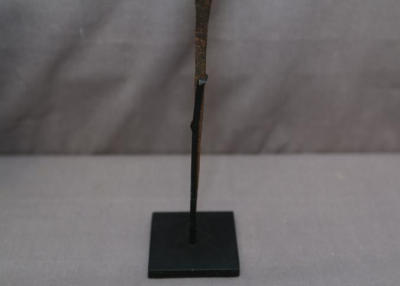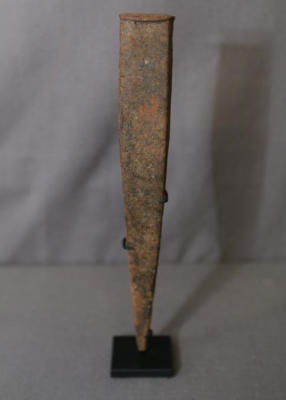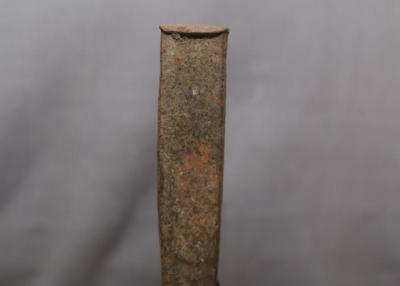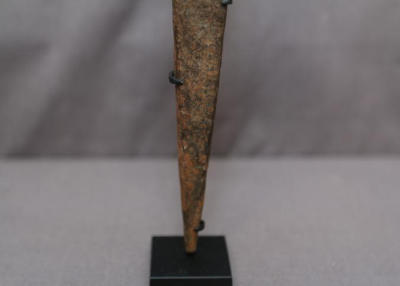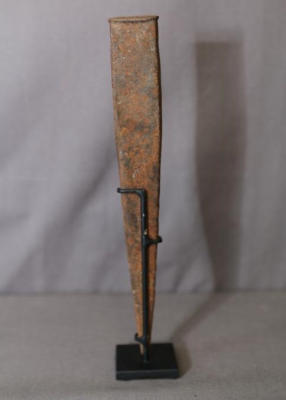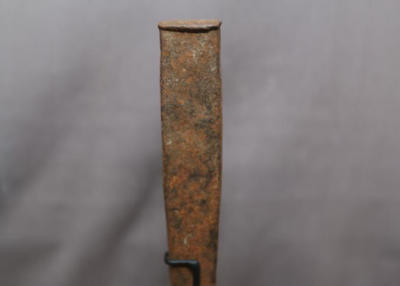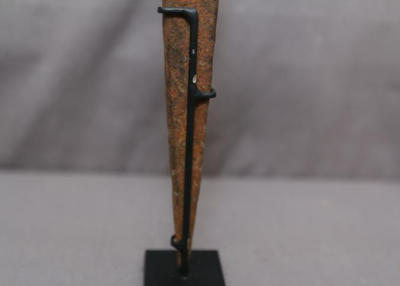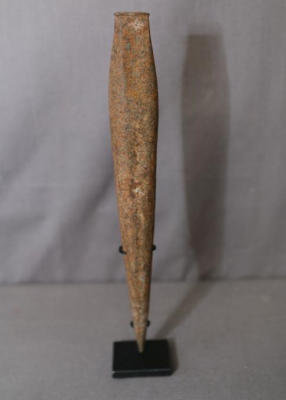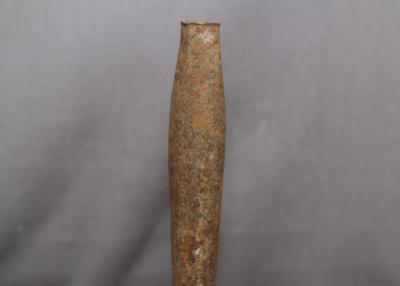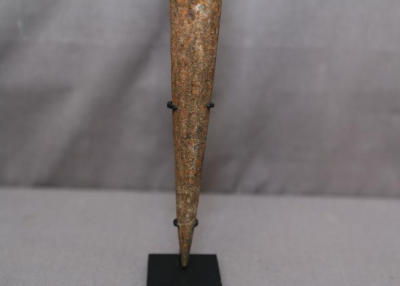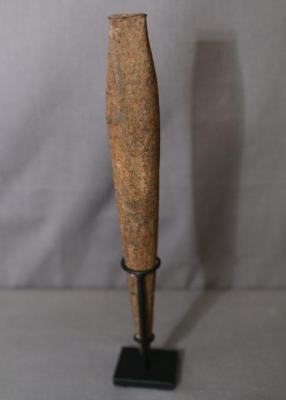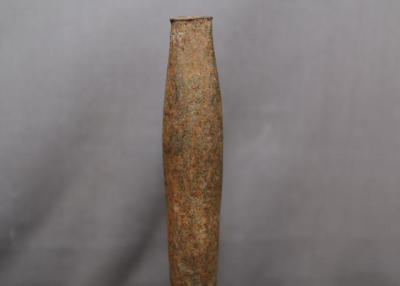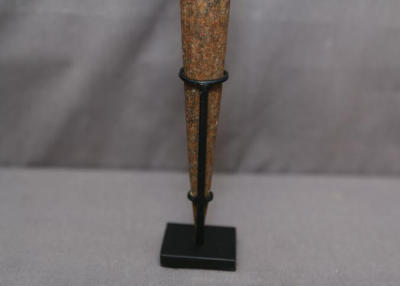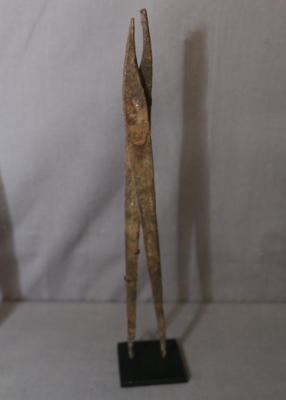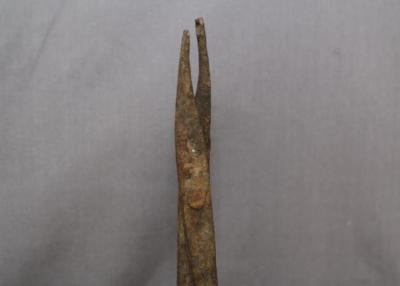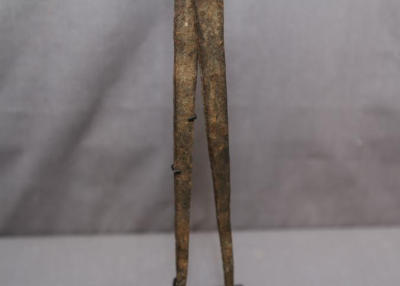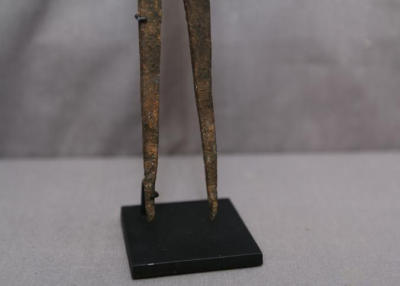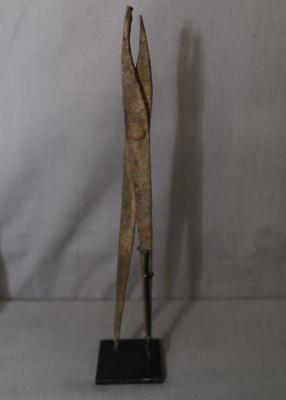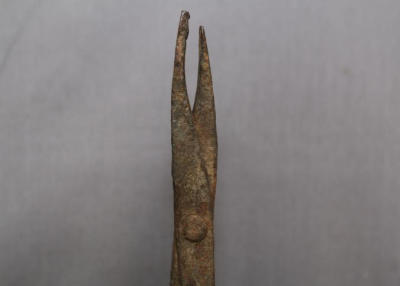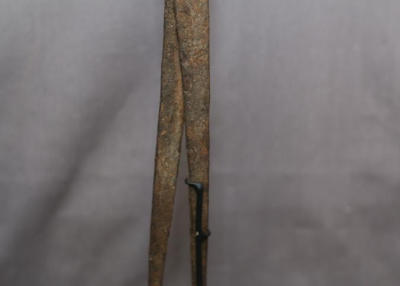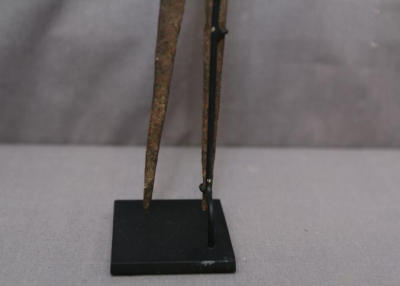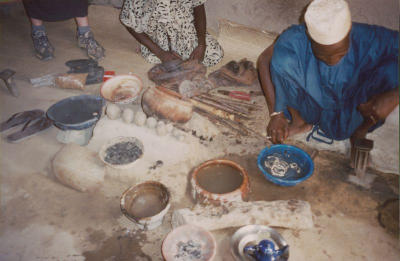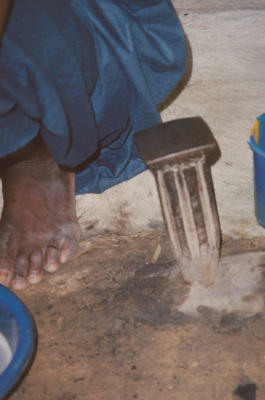Items located in Pleasant Valley, NY.
RARE AFRICAN ART: A CURATED AUCTION FROM THE ROSEN COLLECTION MASKS, WEAPONS, BLACKSMITH’S TOOLS, TEXTILES, ASAFO FLAGS GOLDWEIGHTS, PRE-COIN AFRICAN METAL CURRENCY
Items include a SERPENTINE CEREMONIAL WEAPON; a METAL PARRY SHIELD; a WEDDING BLANKET; a RARE ARON ARABAI FACE MASK; an ASAFO MILITIA FLAG AND SUPI’S WHIP; HEAD CREST MASKS; a BARK CLOTH PRESTIGE DANCE SKIRT; a BUNDU (SOWEI) HELMET MASK; ELU FACE MASKS; a TWISTED TRIPLE COIL KNOTTED CURRENCY BRACELET; a RARE OLD PRESTIGE DANCE SKIRT WITH GINGHAM PATCHES; a FIGURATIVE GOLD WEIGHTS; a CEREMONIAL (ADANUDO) ROBE; and more.
AFRICAN ART COLLECTION OF MARY SUE AND PAUL PETER ROSEN
Mary Sue and Paul Peter Rosen have collected African art for over thirty years, making nine trips to Africa to study the art in its cultural setting. The Rosens have published three African art books, curated more than ten exhibitions from their collection, and have given public lectures about African art and culture. They have donated art from their collection to various institutions including the Newark Museum, Temple University in Philadelphia, the SMA Fathers African Art Museum in Tenafly, New Jersey, and the African American Research Library in Fort Lauderdale, Florida.
Payment is due by Monday, September 17 at 1PM.
Pickup in Pleasant Valley, NY must be completed by Monday, September 17 at 3PM.
All lots sold as is, where is. There is a 15% Buyers Premium for all lots purchased. Payment methods include cash, MC, Visa, Discover or good check. You can make credit card payment online by going to your Member Area and selecting your invoice.
*NOTE* Shipping is available on all items.
RARE AFRICAN ART: A CURATED AUCTION FROM THE ROSEN COLLECTION MASKS, WEAPONS, BLACKSMITH’S TOOLS, TEXTILES, ASAFO FLAGS GOLDWEIGHTS, PRE-COIN AFRICAN METAL CURRENCY
Items include a SERPENTINE CEREMONIAL WEAPON; a METAL PARRY SHIELD; a WEDDING BLANKET; a RARE ARON ARABAI FACE MASK; an ASAFO MILITIA FLAG AND SUPI’S WHIP; HEAD CREST MASKS; a BARK CLOTH PRESTIGE DANCE SKIRT; a BUNDU (SOWEI) HELMET MASK; ELU FACE MASKS; a TWISTED TRIPLE COIL KNOTTED CURRENCY BRACELET; a RARE OLD PRESTIGE DANCE SKIRT WITH GINGHAM PATCHES; a FIGURATIVE GOLD WEIGHTS; a CEREMONIAL (ADANUDO) ROBE; and more.
AFRICAN ART COLLECTION OF MARY SUE AND PAUL PETER ROSEN
Mary Sue and Paul Peter Rosen have collected African art for over thirty years, making nine trips to Africa to study the art in its cultural setting. The Rosens have published three African art books, curated more than ten exhibitions from their collection, and have given public lectures about African art and culture. They have donated art from their collection to various institutions including the Newark Museum, Temple University in Philadelphia, the SMA Fathers African Art Museum in Tenafly, New Jersey, and the African American Research Library in Fort Lauderdale, Florida.
Payment is due by Monday, September 17 at 1PM.
Pickup in Pleasant Valley, NY must be completed by Monday, September 17 at 3PM.
All lots sold as is, where is. There is a 15% Buyers Premium for all lots purchased. Payment methods include cash, MC, Visa, Discover or good check. You can make credit card payment online by going to your Member Area and selecting your invoice.
*NOTE* Shipping is available on all items.
THE FOLLOWING REFERENCES ARE CITED BY AUTHOR NAME AND PUBLICATION DATE IN VARIOUS LOTS:
MS ROSEN/PP ROSEN MASKS FROM WEST AND CENTRAL AFRICA 2013 MS ROSEN/PP ROSEN EMBLEMS OF POWER: ASAFO FLAGS FROM GHANA 2013 (See Lots #7 & 17).
Auction Info
Items located in Pleasant Valley, NY.
RARE AFRICAN ART: A CURATED AUCTION FROM THE ROSEN COLLECTION MASKS, WEAPONS, BLACKSMITH’S TOOLS, TEXTILES, ASAFO FLAGS GOLDWEIGHTS, PRE-COIN AFRICAN METAL CURRENCY
Items include a SERPENTINE CEREMONIAL WEAPON; a METAL PARRY SHIELD; a WEDDING BLANKET; a RARE ARON ARABAI FACE MASK; an ASAFO MILITIA FLAG AND SUPI’S WHIP; HEAD CREST MASKS; a BARK CLOTH PRESTIGE DANCE SKIRT; a BUNDU (SOWEI) HELMET MASK; ELU FACE MASKS; a TWISTED TRIPLE COIL KNOTTED CURRENCY BRACELET; a RARE OLD PRESTIGE DANCE SKIRT WITH GINGHAM PATCHES; a FIGURATIVE GOLD WEIGHTS; a CEREMONIAL (ADANUDO) ROBE; and more.
AFRICAN ART COLLECTION OF MARY SUE AND PAUL PETER ROSEN
Mary Sue and Paul Peter Rosen have collected African art for over thirty years, making nine trips to Africa to study the art in its cultural setting. The Rosens have published three African art books, curated more than ten exhibitions from their collection, and have given public lectures about African art and culture. They have donated art from their collection to various institutions including the Newark Museum, Temple University in Philadelphia, the SMA Fathers African Art Museum in Tenafly, New Jersey, and the African American Research Library in Fort Lauderdale, Florida.
Payment is due by Monday, September 17 at 1PM.
Pickup in Pleasant Valley, NY must be completed by Monday, September 17 at 3PM.
All lots sold as is, where is. There is a 15% Buyers Premium for all lots purchased. Payment methods include cash, MC, Visa, Discover or good check. You can make credit card payment online by going to your Member Area and selecting your invoice.
*NOTE* Shipping is available on all items.
RARE AFRICAN ART: A CURATED AUCTION FROM THE ROSEN COLLECTION MASKS, WEAPONS, BLACKSMITH’S TOOLS, TEXTILES, ASAFO FLAGS GOLDWEIGHTS, PRE-COIN AFRICAN METAL CURRENCY
Items include a SERPENTINE CEREMONIAL WEAPON; a METAL PARRY SHIELD; a WEDDING BLANKET; a RARE ARON ARABAI FACE MASK; an ASAFO MILITIA FLAG AND SUPI’S WHIP; HEAD CREST MASKS; a BARK CLOTH PRESTIGE DANCE SKIRT; a BUNDU (SOWEI) HELMET MASK; ELU FACE MASKS; a TWISTED TRIPLE COIL KNOTTED CURRENCY BRACELET; a RARE OLD PRESTIGE DANCE SKIRT WITH GINGHAM PATCHES; a FIGURATIVE GOLD WEIGHTS; a CEREMONIAL (ADANUDO) ROBE; and more.
AFRICAN ART COLLECTION OF MARY SUE AND PAUL PETER ROSEN
Mary Sue and Paul Peter Rosen have collected African art for over thirty years, making nine trips to Africa to study the art in its cultural setting. The Rosens have published three African art books, curated more than ten exhibitions from their collection, and have given public lectures about African art and culture. They have donated art from their collection to various institutions including the Newark Museum, Temple University in Philadelphia, the SMA Fathers African Art Museum in Tenafly, New Jersey, and the African American Research Library in Fort Lauderdale, Florida.
Payment is due by Monday, September 17 at 1PM.
Pickup in Pleasant Valley, NY must be completed by Monday, September 17 at 3PM.
All lots sold as is, where is. There is a 15% Buyers Premium for all lots purchased. Payment methods include cash, MC, Visa, Discover or good check. You can make credit card payment online by going to your Member Area and selecting your invoice.
*NOTE* Shipping is available on all items.
THE FOLLOWING REFERENCES ARE CITED BY AUTHOR NAME AND PUBLICATION DATE IN VARIOUS LOTS:
MS ROSEN/PP ROSEN MASKS FROM WEST AND CENTRAL AFRICA 2013 MS ROSEN/PP ROSEN EMBLEMS OF POWER: ASAFO FLAGS FROM GHANA 2013 (See Lots #7 & 17).
Categories:
TRADITIONAL WEST AFRICAN BLACKSMITH’S TOOLS. The presence of iron in West Africa predates the first arrival of Europeans in the fifteenth century. The process of smelting in which ore from the earth is brought together with fire and air was imbued with mythical qualities associated with fertility, conception, and birth. Iron ore was likened to blood of the earth which during smelting was transformed into a symbolic fetus, the bloom containing iron, that was born from a metaphorical womb, the furnace, from which the slag or placenta was delivered. In some communities, blacksmiths smelted iron ore, but more often smithing and smelting were done by different families. Each was a sacred activity exclusive to men requiring secret rituals that were passed along with the smith’s tools to apprentices who were often male members of the smith’s family. All tools on custom bases. (A) Old hand-forged anvil H8in W8lb. (B) Tongs. Senegal. H11in. (C) Spike-shaped anvil. Cameroon. H10in. (D) Spike-shaped anvil. Ivory Coast H8.5in. (E) Tongs. Burkina Faso. H13.5in. (F) Awl with wooden handle. Guinea. Red hot awls were used to burn holes in wood, leather and thin sheets of metal. H16in. See picture showing tools in a blacksmith’s work shop in Tongarogo village, Mali, in 2003. The blacksmith is sitting on a terra cotta stool (see Lot # 3) that is covered by his blue robe. The man in the white outfit is his apprentice. Note the anvil next to the blacksmith’s left foot (see pictures). All exhibited at the Pen and Brush Gallery New York 2003.
More Details
TRADITIONAL WEST AFRICAN BLACKSMITH’S TOOLS. The presence of iron in West Africa predates the first arrival of Europeans in the fifteenth century. The process of smelting in which ore from the earth is brought together with fire and air was imbued with mythical qualities associated with fertility, conception, and birth. Iron ore was likened to blood of the earth which during smelting was transformed into a symbolic fetus, the bloom containing iron, that was born from a metaphorical womb, the furnace, from which the slag or placenta was delivered. In some communities, blacksmiths smelted iron ore, but more often smithing and smelting were done by different families. Each was a sacred activity exclusive to men requiring secret rituals that were passed along with the smith’s tools to apprentices who were often male members of the smith’s family. All tools on custom bases. (A) Old hand-forged anvil H8in W8lb. (B) Tongs. Senegal. H11in. (C) Spike-shaped anvil. Cameroon. H10in. (D) Spike-shaped anvil. Ivory Coast H8.5in. (E) Tongs. Burkina Faso. H13.5in. (F) Awl with wooden handle. Guinea. Red hot awls were used to burn holes in wood, leather and thin sheets of metal. H16in. See picture showing tools in a blacksmith’s work shop in Tongarogo village, Mali, in 2003. The blacksmith is sitting on a terra cotta stool (see Lot # 3) that is covered by his blue robe. The man in the white outfit is his apprentice. Note the anvil next to the blacksmith’s left foot (see pictures). All exhibited at the Pen and Brush Gallery New York 2003.
High Bid:
$130.00 – guyro
Auction Type: One Lot
Quantity: 1
Bidding has closed on this lot

